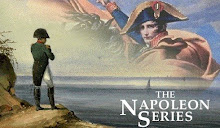.jpg) «Some of the exploits of the Portuguese brigades hardly obtain in Napier's history the prominence that is their due. While he acknowledges the good service of the Light Division caçadores at Bussaco and elsewhere, there is scarcely praise enough given to Harvey's brigade at Albuera, who received and repulsed in line the charge of Latour-Maubourg's dragoons, a feat of which any British troops would have been proud. And the desperate resistance for many hours of Ashworth's Portuguese at St. Pierre near Bayonne is hardly noticed with sufficient gratitude forming the centre of Hill's thin line, pressed upon by overwhelming numbers, and with both flanks turned from time to time, they fought out a whole long morning of battle, and never gave way an inch, though their line was reduced to a thin chain of skirmishers scattered along a hedge and a coppice. The advance of the 13th and 24th Portuguese at the storm of St. Sebastian, across a ford 200 yards wide and waist-deep, swept by artillery fire from end to end, does however receive from Napier its due meed of admiration. This was a great achievement - every wounded man was doomed to drowning: on the other side was the blazing breach, where the British assault had come to a dead stop after dreadful slaughter, but the Portuguese regiments won their way over the deadly water, and took their share in the final assault with unflinching courage.
«Some of the exploits of the Portuguese brigades hardly obtain in Napier's history the prominence that is their due. While he acknowledges the good service of the Light Division caçadores at Bussaco and elsewhere, there is scarcely praise enough given to Harvey's brigade at Albuera, who received and repulsed in line the charge of Latour-Maubourg's dragoons, a feat of which any British troops would have been proud. And the desperate resistance for many hours of Ashworth's Portuguese at St. Pierre near Bayonne is hardly noticed with sufficient gratitude forming the centre of Hill's thin line, pressed upon by overwhelming numbers, and with both flanks turned from time to time, they fought out a whole long morning of battle, and never gave way an inch, though their line was reduced to a thin chain of skirmishers scattered along a hedge and a coppice. The advance of the 13th and 24th Portuguese at the storm of St. Sebastian, across a ford 200 yards wide and waist-deep, swept by artillery fire from end to end, does however receive from Napier its due meed of admiration. This was a great achievement - every wounded man was doomed to drowning: on the other side was the blazing breach, where the British assault had come to a dead stop after dreadful slaughter, but the Portuguese regiments won their way over the deadly water, and took their share in the final assault with unflinching courage.On the whole, the caçador battalions had the finest record in the Portuguese Army, the cavalry the least satisfactory. Some good work is recorded of them, e.g. the charge of Madden's squadrons saved the whole of La Romana's army at the combat of Fuente del Maestre in 1810, and that of D'Urban's brigade gave efficient help to Pakenham's great flank attack at Salamanca in 1812.»
Charles Oman in Wellington's Army: 1809-1814, Londres : Greenhill Books; 1993, pág 234.
Oman é sem duvida o melhor historiador da Guerra Peninsular, com a sua obra em 7 volumes History of the Peninsular War















Sem comentários:
Enviar um comentário